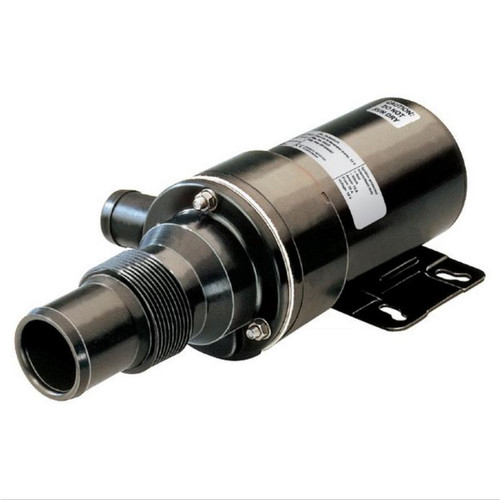-

Johnson Pump - SPXFLOW
SPX Oil Change Impeller Pump - 21 L/min
21 L/min Oil Change Impeller Pumps manufactured by Johnson Pump SPX FLOW. Reversible rubber impeller pump with integrated quick reversing switch. Designed to remove old oil from the engine/fill new oil back into the engine. Part...
-

Johnson Pump - SPXFLOW
SPX Impeller Pumps - 48 L/min
48 L/min Impeller Pumps manufactured by Johnson Pump SPX FLOW. Perfect for bilge pumping, deckwash, water circulation, oil and diesel refuelling at dockside service, and similar. Part...
-

Johnson Pump - SPXFLOW
SPX Macerator Pump
Macerator Pump manufactured by Johnson Pump SPX FLOW. The TA3P10-19 macerator pump takes care of toilet waste. A rotary cutter shreds waste before it is pumped into or out from the holding tank. The pump should be connected as close as possible...
-

Johnson Pump - SPXFLOW
SPX Viking Power Diaphragm Pump - 16
Viking Power Diaphragm Pumps manufactured by SPXFLOW Johnson Pump. The Viking Power 16 is self-priming up to a height of 3 metres. With its low pulse and muffled rubber bracket, this pump offers quiet operation. Specifically designed to pump...
Plumbing, Sinks, Toilets & Pumps
The plumbing system on a boat is responsible for providing fresh water for drinking, cooking, and bathing, as well as for disposing of wastewater. The system typically consists of a freshwater tank, a wastewater tank, a pump, and a variety of pipes and fittings.
- Freshwater tank: The freshwater tank is where the fresh water is stored. It is typically made of plastic or fiberglass, and it is located in a secure location below the waterline. The tank is filled with fresh water from a shoreside dock or from a watermaker.
- Wastewater tank: The wastewater tank is where the wastewater is stored. It is typically made of plastic or fiberglass, and it is located in a secure location below the waterline. The tank is emptied by pumping the contents overboard.
- Pump: The pump is used to move the water between the tanks and to the faucets and appliances. It is typically an electric pump, but it can also be a manual pump.
- Pipes and fittings: The pipes and fittings are used to connect the tanks, the pump, and the faucets and appliances. They are typically made of plastic or stainless steel.
In addition to the basic plumbing system, some boats also have a hot water system. The hot water system typically consists of a water heater, a pump, and a variety of pipes and fittings. The water heater is used to heat the water in the freshwater tank. The hot water is then pumped to the faucets and appliances.
The sinks, toilets, and pumps on a boat are all connected to the plumbing system. The sinks are used for washing dishes, hands, and faces. The toilets are used for disposing of human waste. The pumps are used to move the water between the tanks and to the faucets and appliances.
The plumbing system on a boat is an important part of the boat's overall systems. It is important to keep the system clean and well-maintained to ensure that it works properly.
Here are some additional details about the plumbing, sinks, toilets, and pumps on a boat:
- Plumbing: The plumbing on a boat is typically made of plastic or stainless steel. It is important to use materials that are resistant to corrosion and that will not leach harmful chemicals into the water.
- Sinks: The sinks on a boat are typically made of stainless steel or fiberglass. They should be easy to clean and should be able to withstand the elements.
- Toilets: The toilets on a boat are typically either marine toilets or composting toilets. Marine toilets use a holding tank to store the waste, which is then pumped overboard. Composting toilets use a biological process to break down the waste, which is then stored in a container until it can be disposed of onshore.
- Pumps: The pumps on a boat are typically electric pumps. They should be able to move a large volume of water quickly and efficiently.
It is important to keep the plumbing, sinks, toilets, and pumps on a boat clean and well-maintained. This will help to ensure that the system works properly and that the water is safe to use.
